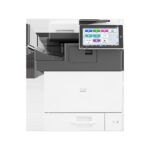Medicare Part D is a crucial component of Medicare, the federal health insurance program for people aged 65 or older, certain younger people with disabilities, and people with End-Stage Renal Disease (ESRD). Specifically, Part D focuses on prescription drug coverage, helping beneficiaries manage the costs of medications they need. This guide provides a comprehensive overview of Medicare Part D, including what it covers, associated costs, and how to enroll.
Each Medicare Part D plan maintains a list of covered medications, known as a formulary. This formulary determines which drugs are covered and which are not. It’s important to note that the formulary can vary significantly from one plan to another.
Many plans organize their formularies into different tiers, each with varying cost-sharing amounts. Generally, drugs in lower tiers have lower costs than those in higher tiers. A typical Medicare drug plan’s tier system might look like this:
- Tier 1 – Preferred Generic: These are typically generic drugs available at the lowest cost-share for the plan.
- Tier 2 – Generic: These are also generic drugs but offered at a higher cost than Tier 1 drugs.
- Tier 3 – Preferred Brand: Brand-name drugs offered at a lower cost than Tier 4 drugs.
- Tier 4 – Non-Preferred Drug: Brand-name or generic drugs offered at a higher cost than Tier 3 drugs.
- Tier 5 – Specialty Tier: High-cost medications, including injectables.
Understanding Medicare Part D Coverage: What’s Included and Excluded
While Medicare Part D offers broad coverage, some medications are typically excluded. The specific drugs covered depend on the plan’s formulary, which may limit coverage based on medical necessity, cost, or safety. It’s essential to review your plan’s formulary to understand which drugs are covered.
Medicare Part D plans may also impose restrictions and limitations on certain medications. These can include:
- Prior Authorization: The plan may require your doctor to obtain approval before prescribing certain medications. This ensures that the drug is medically necessary or is appropriate for your specific condition.
- Step Therapy: In some cases, the plan may require you to try a lower-cost drug first before covering a more expensive one. This approach helps manage costs while ensuring effective treatment.
- Quantity Limits: The plan may limit the amount of medication prescribed over a specific period. This is often done for safety reasons or to control costs.
Appealing a Coverage Denial
If your drug is not covered, you have the right to appeal. You and your doctor can submit a formal request for an exception to the plan’s coverage rules. For instance, you can request coverage for a drug not included in the formulary or ask for a waiver of the step therapy requirement.
Medicare Part D Costs: Premiums, Deductibles, and Copays
The costs associated with Medicare Part D include several different payments. The exact amount varies depending on your plan, the drug’s tier, and the pharmacy you use.
- Monthly Premiums: Most Part D plans charge a monthly premium, in addition to the premium you pay for Medicare Part B.
- Monthly Adjustment: If your income exceeds a certain limit, you may also be required to pay a monthly adjustment, supplementing your standard premium.
- Yearly Deductibles: Many plans require you to pay a certain amount each year for your prescription drugs before the plan begins to cover costs. For 2025, the maximum deductible is $590.
- Copayments or Coinsurance: After meeting your deductible, you’ll likely need to pay a copayment or coinsurance for each prescription.
The Future of Part D: Changes in 2025
Significant changes are coming to Part D in 2025. The “donut hole,” or coverage gap, will be eliminated. Once you reach your deductible, you will pay no more than 25% of the cost for covered Part D drugs until you reach a maximum out-of-pocket cost of $2,000. After that, you will pay nothing for covered Part D drugs for the remainder of the year.
Extra Help: Assistance with Prescription Drug Costs
If you have limited income and resources, you may qualify for Extra Help, a program that helps pay for Medicare prescription drug costs. You automatically qualify if you have Medicare and are enrolled in any of the following programs:
- Full Medicaid coverage
- Assistance from your state Medicaid program for covering Part B premiums
- Supplemental Security Income benefits
Even if you don’t automatically qualify, you can apply for Extra Help at any time through the Social Security Administration.
Enrolling in Medicare Part D
Generally, if you qualify for Medicare, you also qualify for Part D prescription drug coverage. However, you can only enroll during specific periods:
- Initial Enrollment Period (IEP): This period spans three months before the month you turn 65, the month of your 65th birthday, and three months after.
- Annual Enrollment Period (AEP): From October 15 to December 7 each year, you can make changes to your Medicare Part C and Part D coverage, with changes taking effect on January 1 of the following year.
- Medicare Advantage Open Enrollment Period (OEP): Lasting from January 1 to March 31 each year, you can add, drop, or change your Part D coverage during this time.
- Special Enrollment Period (SEP): You may be eligible for a SEP under certain circumstances, such as changes to job-based drug coverage or if you gain or lose Extra Help.
Understanding what is Medicare Part D is essential for navigating your healthcare options. By familiarizing yourself with its coverage, costs, and enrollment periods, you can make informed decisions to ensure you receive the prescription drug coverage you need.
